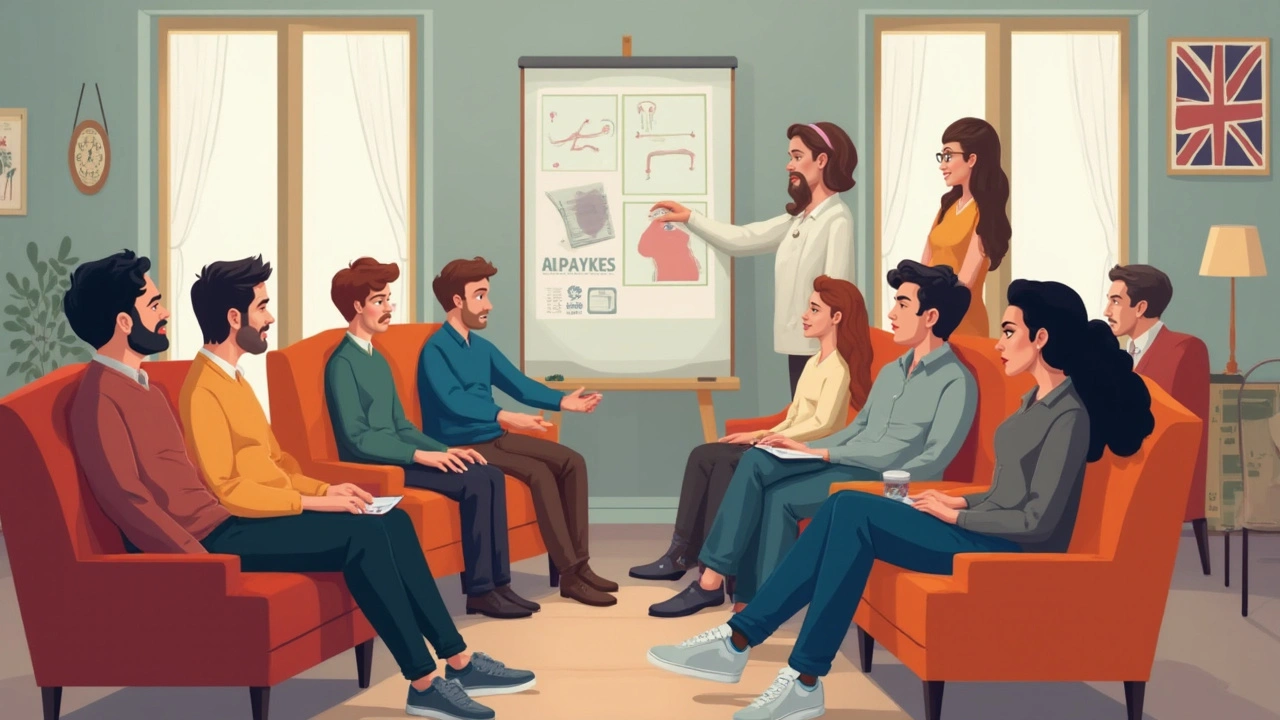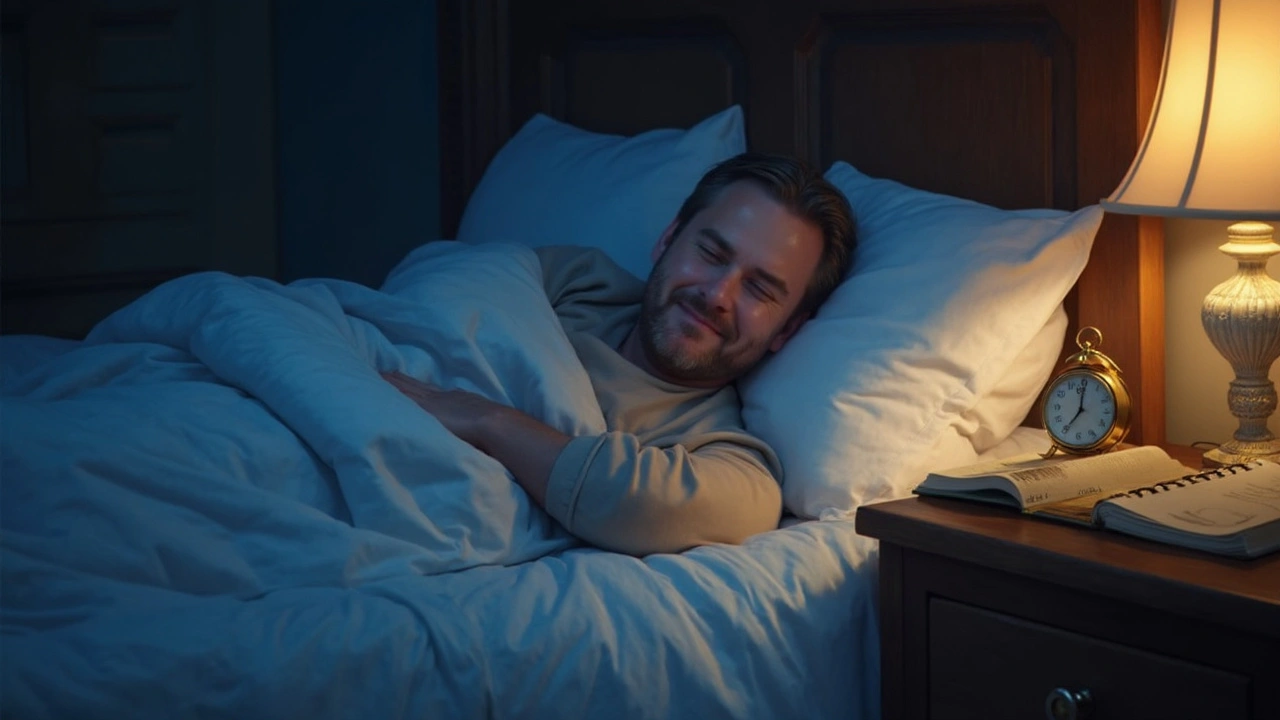
Waking up three times a night to pee. Mapping out every public toilet before leaving home. That all-too-familiar feeling of not making it in time. If you’ve felt chained to the bathroom, you’re not alone—overactive bladder affects millions of people, and, fair or not, it doesn’t care if you’re fit, busy, or eating all the right leafy greens. But what if the solution didn’t have to come from a pill bottle or a scary surgery? Bladder retraining, a technique that’s been around for decades, is finally getting the attention it deserves for helping people take back control of their lives and bladders—naturally, and without the pricetag or side effects of medication. Get set for practical advice, surprising science, and those tiny wins that add up to genuine confidence.
How Bladder Retraining Tackles Overactive Bladder
The basic idea behind bladder retraining is simple: teach your bladder to behave, rather than letting it boss you around. People with overactive bladder (OAB) often get urgent warnings to go—now—or risk leakage and embarrassment. But when you always react to those urges right away, your bladder “learns” that it can call the shots. Over time, it gets overly sensitive, giving off early warning signals before it’s even close to full.
Retraining flips that script. Instead of listening to every urge, you start delaying bathroom trips on purpose. At first, it might be just five or ten minutes—even that can feel like an eternity when anxiety is high. The brain needs to get used to not giving in, and the bladder gets a chance to stretch and store more urine. Nurses and continence physiotherapists say the process is a bit like gradually strengthening a weak muscle. It takes patience, support, and sometimes a few false starts, but research shows that most people see big improvements within three months—and often much sooner.
There’s another interesting twist here: it’s not just about muscles and reflexes. When you start to challenge those urges instead of giving in, your brain creates new connections. Psychology researchers at the University of Sydney point out that this “brain rewiring” effect means retraining doesn’t just help at a physical level but changes how you feel about your own body. More confidence, less anxiety, and the kind of relief you can’t bottle—literally.
One myth worth clearing up: bladder retraining is not about holding on until you explode or putting up with pain—never ignore major discomfort or bleeding, as those can signal infection or other issues. Retraining is about gradually stretching the gap between bathroom visits and re-learning what a healthy, normal urge actually feels like.
Step-by-Step Guide to Bladder Retraining
Doctors and continence clinics often recommend bladder retraining as a first step—even before meds, devices, or surgery. The beauty is, you can start it right at home with no gear or gadgets. Here’s how the process generally works:
- Keep a Bladder Diary: For three days, jot down when you pee, how much you drink, and whether you have any leaks or strong urges. This gives you a “baseline” and helps spot any patterns or triggers (like coffee, wine, or stress).
- Set a Bathroom Schedule: Look at your diary and note how often you typically go. If it’s every hour, start with that interval. The goal: don’t visit the loo before that time, even if you feel an urge.
- Delay Gradually: After a few days, if you’re managing okay, increase your interval by five or ten minutes. For example, push your visits to every 70 minutes, then 80, and so on, until you’re spacing them two to four hours apart—the range doctors consider normal.
- Handle Urges Smartly: When that “must go” feeling hits, don’t run to the toilet. Try deep breathing, pelvic floor squeezes, or distraction (scrolling your phone, anyone?). Some experts recommend the “freeze and squeeze” trick: stop what you’re doing, sit or stand still, and squeeze those pelvic muscles for ten seconds.
- Be Kind to Yourself: Relapses and leaks happen. Rather than beating yourself up, treat each day as a fresh start. A lot of folks find motivation by tracking small wins—a longer overnight stretch, fewer day leaks, or the first time managing the movies without missing a scene.
One quick tip: go easy on liquids like coffee, tea, and fizzy drinks, as these can irritate the bladder. Drink water when you’re thirsty but don’t try to "train" yourself by cutting fluids! That can actually make things worse. Aim for about 1.5 to 2 litres of fluids (mostly water) per day unless a doctor says otherwise.

Real-Life Benefits—Beyond the Bathroom
Sure, not having to dash for the loo is relief enough. But people who stick with bladder retraining report a bunch of other perks. For starters, it means less stress around leaving the house or doing things you love. No more mapping out public toilets at every shopping centre or worrying about sitting through a live show. Relationships see a boost—nobody likes constant interruptions, whether at the movies or on a dinner date.
Getting better control over urges can also mean fewer accidents and less use of pads or adult diapers. That’s not just a confidence boost, it’s a real money-saver. According to a 2023 survey by the Continence Foundation of Australia, the average person with OAB spends about $900 a year on incontinence supplies and extra laundry. Cutting that back is a win for your wallet, and your planet—less landfill, less embarrassment at the shops.
The psychological benefits really shouldn’t be underestimated, either. People often say they felt trapped before retraining—held hostage by the next bathroom break. Regaining control brings a sense of freedom and lowers anxiety. There’s also evidence that sticking with the program can help you sleep better, since waking up less often at night means deeper rest, more energy, and a much better mood.
Talking honestly, not every case of OAB is totally cured by retraining alone. But even a 50% drop in daily accidents can feel like a miracle. Most folks notice progress after two to four weeks, and for many, the improvements stick year after year as long as they keep up the new habits.
Bladder Training Myths—And What Actually Works
Let’s tackle a few common myths that pop up when you start asking around about bladder retraining. First off: no, you’re not “too old” or “too far gone” to benefit. This isn’t just a technique for new mums or middle-aged women. Men, women, people in their 80s, and folks with mobility challenges have all found success—sometimes even wheelchair users. The key is sticking with the plan and not expecting miracles overnight.
Another myth: pelvic floor exercises alone fix everything. They definitely help (especially if you leak when you cough, laugh, or sneeze), but for overactive bladder—which is mostly about urgency and frequency—you need to combine those squeezes with actual retraining. Pelvic floor exercises act like a backup system, but retraining addresses the habit and urgency triggers directly.
It’s also untrue that you should “hold it as long as possible!” That can stress your bladder, making things worse. Success comes from gradual changes, not white-knuckling your way to four-hour gaps on day one. Some folks believe cutting back on fluids will cure OAB, but that can lead to dehydration and, ironically, more frequent bathroom trips (since concentrated urine irritates the bladder lining). Go for gentle, steady progress and drink to thirst—don’t overdo it.
One more tip: be careful with herbal supplements or “miracle” pills claiming to fix OAB overnight. Most of these haven’t been properly tested, and at best, you’ll waste money—at worst, you could end up with a nasty side effect or an interaction with your other meds.

Long-Term Success: Making Retraining Part of Daily Life
Sticking with new habits is the trickiest part. Those first wins—like sleeping through the night or spending an afternoon out without fear— can give you the confidence to keep going. But what about after the first few months?
Integrating bladder retraining into your day-to-day takes a bit of creativity. Routine helps; many people find it useful to schedule regular reminders on their phone. Others turn it into a game or a friendly competition with themselves. You might link your bladder training intervals with daily activities—like only going after finishing an episode of your favourite show, or a work Zoom call.
Social support often makes the difference. Tell a trusted mate, your partner, or even join an online community. The Continence Foundation of Australia runs confidential forums where people share their struggles and swaps tips, and you’ll find loads of honest talk, not just the polished success stories.
And if progress stalls—don’t panic. Sometimes people need a tweak to their plan or advice from a continence nurse or urologist. Medical technology has come a long way, and if retraining alone isn’t doing the trick, adding in pelvic floor therapy or medications can help. The great thing is, doctors now really see retraining as the first step, not the last resort.
A final word: if you’re dealing with lots of pain, blood in your urine, or sudden changes like trouble emptying your bladder, check in with your GP ASAP. That’s a different ballgame from standard OAB and deserves quick attention.
Freeing yourself from the cycle of urgency is a slow but steady climb—not a sprint. But with patience, the right effort, and a bit of Aussie grit, bladder retraining can put you back in charge of your bladder, your confidence, and your day-to-day life.
5 Comments
Write a comment
More Articles

Supercharge Your Recovery with Methylpentane: The Post-Workout Supplement You Need
I recently discovered an amazing post-workout supplement called Methylpentane that has truly supercharged my recovery process. This powerful ingredient helps reduce inflammation, supports muscle growth, and boosts overall performance. I've noticed a significant decrease in muscle soreness and fatigue after incorporating it into my routine. I highly recommend giving Methylpentane a try if you're looking to enhance your post-workout recovery. Trust me, your muscles will thank you!

The Role of Psychological Counseling in Dementia of the Alzheimer's Type Care
In my latest blog post, I discuss the vital role psychological counseling plays in the care of individuals with Alzheimer's-type dementia. I highlight how counseling not only supports patients in coping with the emotional and cognitive challenges of the disease but also provides essential guidance to their caregivers. Furthermore, I emphasize the importance of early intervention to maximize the benefits of counseling. Through my research, I've discovered that psychological counseling can significantly improve the overall quality of life for both patients and their families. So, let's spread awareness about the invaluable support that counseling can offer in Alzheimer's care.

Revitalize Your Body and Mind with the Amazing Benefits of Fir Supplements
I recently discovered the incredible benefits of Fir supplements and I just had to share my experience with you all. These supplements have helped me revitalize both my body and mind, giving me a newfound sense of energy and clarity. I've noticed improvements in my immune system, respiratory health, and even my mental well-being. I highly recommend giving Fir supplements a try if you're looking for a natural way to boost your overall health. Trust me, it's a game changer!

George Clark-Roden
May 19, 2025 AT 11:37Wow. I didn’t realize my bladder had been running the show like a tiny, anxious dictator.
I’ve been waking up every two hours since my 40th birthday-thought it was just aging. Turns out, I was just training it to be a diva. The idea of delaying by five minutes feels absurd… until you try it. I did it last night. Five minutes. Sat there. Breathed. Felt like I was holding back a tidal wave. And then-nothing. Just… quiet.
It’s not about willpower. It’s about rewiring. Like when you stop checking your phone every ten seconds, and your brain stops screaming for dopamine. Same thing. Your bladder’s just another nervous system habit.
I’m three weeks in. One less night wake-up. No meds. No pads. Just me, my breath, and a stubborn little organ learning to chill.
And honestly? I feel… more in control of my body than I have in years. Like I’m not just living in it anymore-I’m living with it.